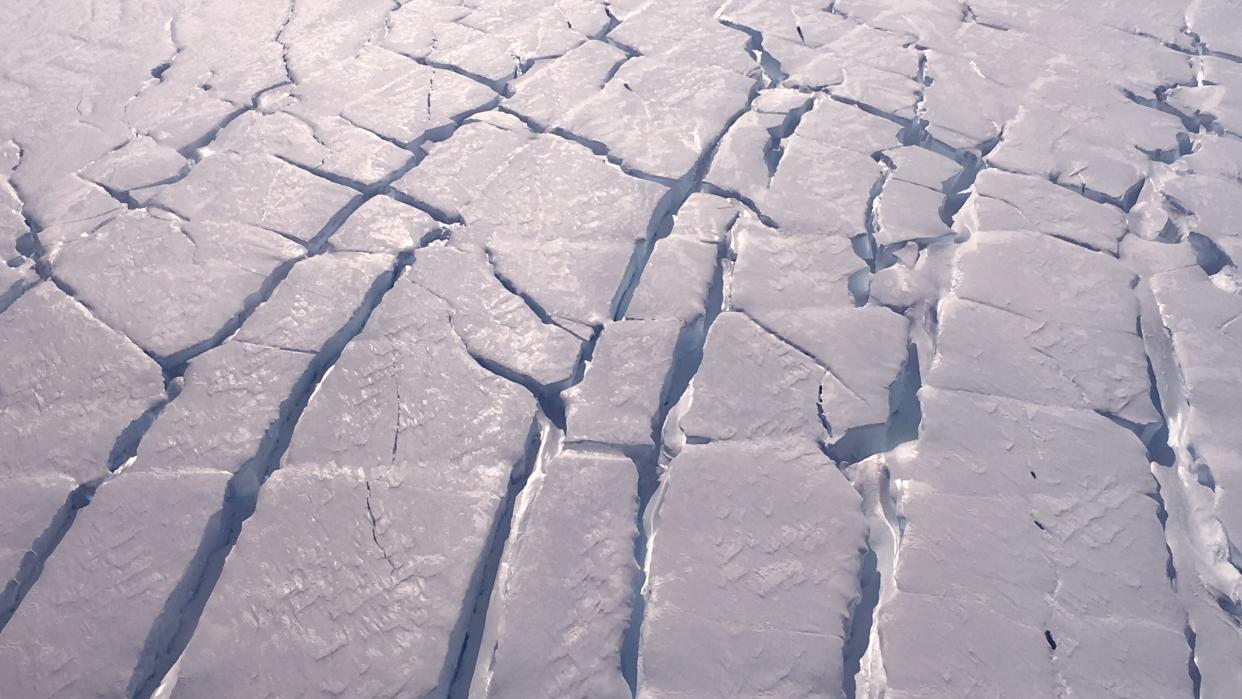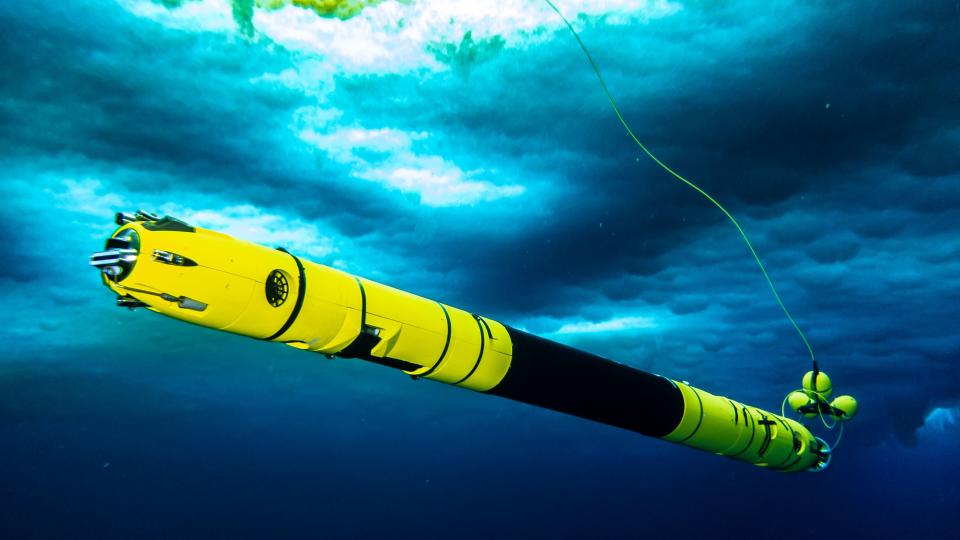Doomsday Glacier is melting slower than previously thought — but it's still in big trouble

An Antarctic glacier nicknamed the "Doomsday Glacier" because of its potential to contribute to catastrophic sea level rise is melting slower than previously estimated.
But Thwaites Glacier in West Antarctica is still in trouble. Two new studies published today (Feb. 15) in the journal Nature reveal that while the glacier is insulated from the most rapid melt, portions of its underside have been sculpted into dramatic, crevassed terraces. And these stairstep formations are melting at a rapid clip.
Thwaites glacier sits over a bowl-like depression of bedrock that slopes upward toward the sea, meaning that much of its ice sits below sea level. For that reason, if the glacier retreats too far back it could collapse rapidly, directly contributing to 1.6 feet (0.5 meter) of sea level rise over a few centuries, according to a commentaryl by Craig McConnochie accompanying the two new studies. McConnochie studies environmental fluid dynamics at the University of Canterbury in New Zealand but was not involved in the new research.
The two studies were conducted as part of the International Thwaites Glacier Collaboration, a joint U.K. and U.S. effort to measure the Doomsday Glacier. For their study, researchers drilled a 1,925-foot-deep (587 m) borehole through the glacier's floating section, about 1.2 miles (2 kilometers) from where the glacier is touching the seafloor — known as the glacier's grounding line. They then fixed an instrument 4.9 feet (1.5 m) below the underside of the ice to measure temperature, salt concentrations, velocity of the water flow and melt rate.
The researchers found that over a nine-month observation period, the melt rate of the ice at this relatively horizontal section of the glacier was slower than computer models have predicted, at about 6.5 to 16.4 feet (2 to 5 m) of ice loss per year. The reason for this slower-than-expected melt rate was that the underside of the ice was cushioned by a layer of fresh meltwater.
"This stratification insulates the ice shelf and slows the rate of melting, even though ocean temperatures remain several degrees above the melting point," McConnochie wrote in his editorial.
Related content
— 'Doomsday' glacier is teetering closer to disaster
— 10 signs we got closer to climate disaster in 2022
— Enormous river discovered beneath Antarctica is more than 300 miles long
The borehole also enabled scientists to peer into the underworld of the ice for a second line of research. Britney Schmidt, an Earth and atmospheric scientist at Cornell University, and her colleagues used the hole to launch a cylindrical robot called Icefin beneath the ice shelf to investigate the difficult-to-reach grounding zone. There, they found that the underside of the ice is not smooth and horizontal but stair-stepped in a series of terraces, with vertical walls up to 19.7 feet (6 m) high. Here, the team also found numerous cracks, known as crevasses, where melting was occurring quickly. At these cracks and vertical surfaces, the team found a melt rate of up to 98.4 feet (30 m) of ice loss per year.

"These new ways of observing the glacier allow us to understand that it’s not just how much melting is happening, but how and where it is happening that matters in these very warm parts of Antarctica," Schmidt said in a statement. "We see crevasses, and probably terraces, across warming glaciers like Thwaites. Warm water is getting into the cracks, helping wear down the glacier at its weakest points."
And if the Doomsday glacier falls, others nearby will potentially follow, and these could raise sea level by as much as 9.8 feet (3 m) over several thousand years, he wrote.

